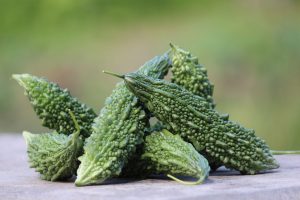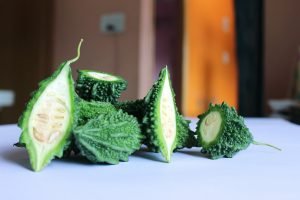How to Grow Bitter Gourd from Seed to Harvest
In this article I have explained How to Grow Bitter Gourd from Seed to Harvest, which helps every farmer and home gardener to gain the knowledge on
- Available verities of Bitter Gourd.
- Seed germination time.
- Suitable soil and weather conditions.
- Field preparation and planting distance.
- Fertilizer and Water Management.
- Required seed per acre and expected yield per acre.
Nutritional values:
Bitter Gourd is rich in vitamins, calcium, iron, mineral salts, fat, carbohydrates and fiber.
Bitter Gourd is cultivated commercially in Uttar Pradesh, Maharashtra, Tamil Nadu, Andhra Pradesh, Telangana, Karnataka and Kerala in India.

Current problems in Bitter Gourd:
- Fruit fly infestation is high
- Less availability of hybrid seeds
Varieties:
Along with common varieties (Deshwali) hybrid varieties are also cultivated in Bitter Gourd. Coimbatore Gree Long, Coimbatore White Long, Arkaharit, Pusa Vishesh, Pusa Do Mausami and Priya Varieties.
Hybrid: Hybrid varieties of M. B.T. H. 101, 102, NS-431, 432, 7711 and shwetha.
Coimbatore Green Long: Its fruits are 30-35 cm long. It is green in color and does not fade for many days. Fruits do not lose their freshness even if they are exported to distant places. Average yield : 6-7 t/a.
Coimbatore White Long: Its fruits are also 20-25 cm long and suitable for commercial cultivation. The tongue is white and loses its luster quickly. Fruits are not suitable for long storage. The average yield is 6.4 t/a.
Arka Harith: This variety can be grown as first and summer crop also. The fruits are thin and stringy, heart-shaped. This variety has low bitterness and medium skin thickness and yields 3.6 – 4.8 t/acre.
Pusavishesh: This variety is very suitable for cultivation as a summer crop.
Pusa Do Mausami: This variety harvest fruits 50-55 days after sowing. The fruits are dark green in color. Each fruit weights 100-120 g. Average yield is 4.8-6.0 t/a.
Priya: The fruits are green in color and 40 cm long. Each vine gives about 40-50 pods.
Weather:
Temperature between 25° centigrade -30° centigrade gives good vine growth and high yield. If the same is less than 18° cm, the flowering will be delayed and the yield will be reduced. If the temperature is above 36° centigrade, the percentage of males will increase and the yield will decrease.
Soils:
Fertile loamy soils, loamy soils, light clay soils with good drainage are suitable. Soils with a Soil PH levels 6.5–7.0 are suitable.
Crop season:
Kharif crop should be sown in June-July. As a summer crop, it can be sown from the second half of December to the first half of January
If the kharif crop is sown late, if it is cold at the time of flowering and fruting, the growth of the fruits will be reduced and the yields will be greatly reduced.
Seed Per Acre:
Seed Rate: 0.8-1.0 kg/acre of seed is sufficient.
Harvesting: Fruits are harvested in 60-65 days after sowing. Harvest once in 3-4 days.
Yield: 4-6 t/a.
Sowing distance:
1.5-2.0 m between rows and 0.5-0.75 m between pits. Sow 3-5 seeds in each pit. After germination of the seeds, plant 2 plants per pit after 2-3 weeks and plant the rest.
Water Management:
The field should be watered before seed sowing. After that water should be given once every 3-4 days. In this way, water should be given till germination and once a week after germination, the pit should be filled with water. Summer crop should be watered once in four to five days.
Harvesting and Yield:
Fruits are harvested in 60-65 days after sowing. Harvest once in 3-4 days.

Yield : 4-6 t/a.
Follow WalPencil to get to know cultivation tips for other vegetable crops like Bottle Gourd, Peas, Ridge Gourd etc.…..
